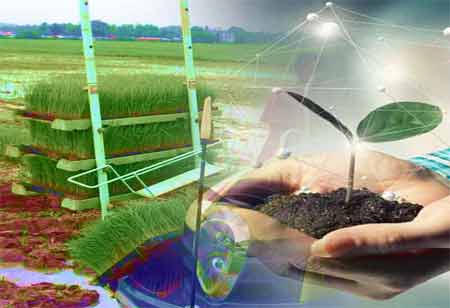Thank you for Subscribing to Agri Business Review Weekly Brief
The Impact of Controlled Environment Agriculture on Global Food Security
Escalated by the exponential population growth and leading concern of global food insecurity, controlled environment agriculture (CEA) has emerged as a new revolution in the agritech industry.

By
Agri Business Review | Monday, July 24, 2023
Stay ahead of the industry with exclusive feature stories on the top companies, expert insights and the latest news delivered straight to your inbox. Subscribe today.
In the scenario of a rising population, the emergence of the controlled environment agriculture technique has been revolutionising the agritech world. It aids attaining global food security.
FREMONT, CA: Escalated by the exponential population growth and leading concern of global food insecurity, controlled environment agriculture (CEA) has emerged as a new revolution in the agritech industry. By introducing innovative methods of growing crops in precisely controlled indoor environments, CEA enabled year-round crop production with optimum resource use and technological integration, resulting in market diversification, climate resilience, reduction in carbon footprint and enhanced crop yield and quality.
With vertical farming techniques, farmers can use 98 per cent less water and 99 per cent less land, with crop yields of 240 times than that of traditional farms through year-round rolling or perpetual harvest. This helps preserve natural habitats and biodiversity, contributing to sustainable land use.
Even though CEA has often been considered a new experiment, the ideas behind the practice go back millennia.
The main illustration of vertical farming known today is that of the Babylonian Hanging Nurseries close a long time back. And all the more mechanically progressed types sprung up during the 1600s. Initially, vertical farming was highly used for creating microclimates, but eventually, it has been widely utilised for sustainably producing crops.
CEA can be available in several forms, from patio gardens built into old pallets to warehouses with stacked trays and greenhouses. This adaptability helps farmers to reduce their occupational hazards, such as conflict with invasive species, pests and other diseases. And with no hazardous chemical runoff, farm-adjacent communities are also protected. Moreover, CEA has a significant role in aiding food security by addressing various challenges and contributing to a more stable and reliable food supply.
Automation plays a key role in this process, with computer-controlled systems, managing various aspects such as controlling lights, irrigation, nutrient delivery and climate control, leading to more efficient and precise farming. Additionally, sensors collect data on environmental factors, plant health, and nutrient levels, enabling growers to make data-driven decisions and fine-tune the growing environment. These elements all together provide precise control over various environmental factors, promoting efficient and sustainable plant growth, which ultimately leads to ensuring global food security.
Advanced irrigation techniques, such as hydroponics and aeroponics, which use significantly less water compared to conventional agriculture, conserve a vital resource, especially in water-scarce regions. In addition to this, it allows for the cultivation of a wide range of crops, including high-value speciality crops and exotic varieties. By diversifying food production, CEA enhances food security by reducing reliance on a limited number of staple crops.
Another feature of vertical farming is that it can bring food production closer to population centres which makes it suitable for high-density urban environments. Reducing the distance of production houses from consumer markets can avoid food wastage through transportation and storage, which ultimately results in the availability of fresh food within reasonable rates and stops market manipulators from the corner market. Similarly, Even smaller families can adopt CEA as it allows effective production within smaller spaces, leading to the facilitation of achieving the goal of global food security.
The global population is expected to grow from 7.9 to 10 billion people within the next 28 years, which points to the need for increasing food production. However, as the practices should restrict carbon footprint, ensuring high yield, the adaptation of vertical farming is crucial. Indeed, currently, major agrotech companies and the government itself are investing in sustainable agricultural practices enormously.





